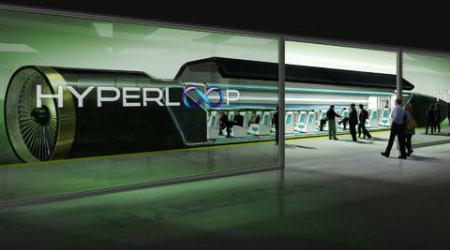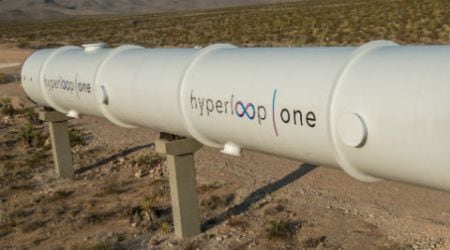 The company will conduct six-month feasibility study beginning October. (File Photo)
The company will conduct six-month feasibility study beginning October. (File Photo)
After the metro projects at Amaravati and Vijaywada hit several roadblocks, the Andhra Pradesh government plans to bring in Hyperloop — the fifth mode of transportation as envisaged by tech entrepreneur Elon Musk — to connect the two cities, and has signed a memorandum of understanding with Hyperloop Transportation Technologies (HTT) for developing the project.
The MoU signed between HTT and Andhra Pradesh Economic Development Board proposes the route between the city centres of Vijayawada and Amaravati, “potentially turning a trip of more than one hour into a 5-minute ride”. In a press release, HTT said that the project will use a Public Private Partnership model with funding primarily from private investors.
In its first phase, the company will conduct six-month feasibility study beginning October, following which it will construct and build HTT’s first Hyperloop in India. “Working with partners in the public and private sector, HTT will analyse the surrounding cityscapes to create the best route between the two cities while identifying all pertinent stakeholders in the region,” the company said.
The Hyperloop project is being pegged as a mode of transport different from rail, mainly due to four reasons. It is said to be two-to-three times faster than the fastest high-speed rail, and in India, it would be possible for the pods to reach the peak speed of 1,100 km per hour on certain routes. Furthermore, Hyperloop departures could happen with a low frequency of a pod every 20 seconds.
Start-ups involved in commercialising the technology have suggested that Hyperloop would have a smaller civil engineering footprint, with no direct emissions or noise. While it did not disclose the time it would take for construction of the project, HTT’s could be the first Hyperloop project in India, but globally, HTT is not the only company involved in developing Elon Musk’s idea of the new means of transportation.
Another company, Hyperloop One, is developing its technology in Los Angeles, and claims that the Hyperloop system’s capital cost per mile is 60 per cent that of high-speed rail, and would be less expensive to operate. Even as Musk initially was not involved with commercialisation of his idea, his firm is now working on the commercial development of the Hyperloop project.
In a post on social media on August 30, Musk shared: “We took the SpaceX/Tesla Hyperloop pusher pod for a spin by itself a few days ago to see what it could do when not pushing student pods (some need a push to get going, e.g. passive maglev). Got up to 355 km/h (220 mph) before things started. Kind of like racing with a tugboat. Maybe able get past 500 km/h (about half speed of sound) next month with a few tweaks or maybe tiny pieces…”
“Major cities of the world has seen declines in livability and transportation has been a major contributor due to congestion, air pollution and accessibility and Andhra Pradesh is shaping the way it approaches transportation in the future. By collaborating with Hyperloop, Amravati is embracing a prototype for the mobility of tomorrow,” said Krishna Kishore, chief executive officer, Andhra Pradesh Economic Development Board.

